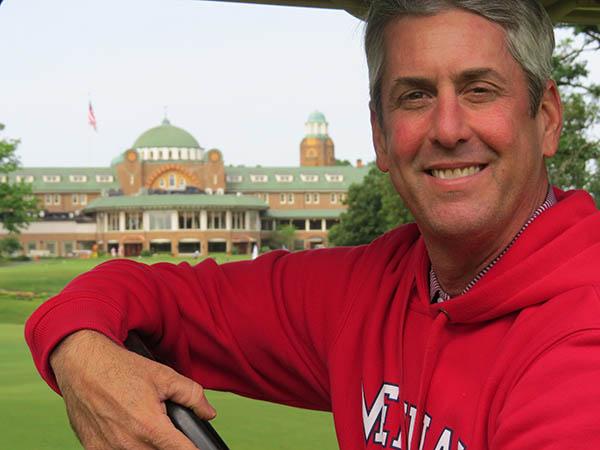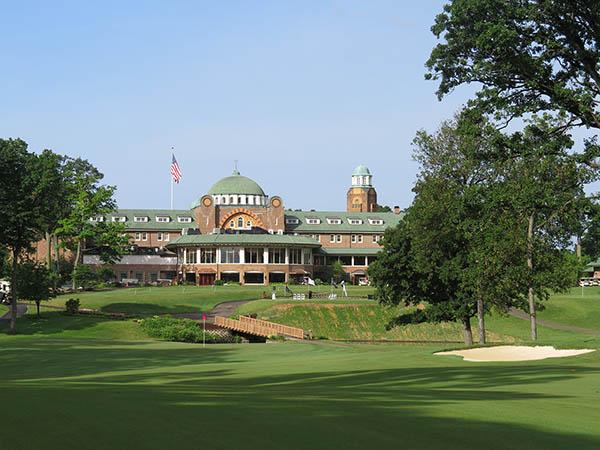For nearly a century, golf at Medinah Country Club has been synonymous with a long, brutish golf course that has tested the world's best players and beat up the rest. Today, the Chicago-area club also is identified with a track that deemphasizes length in an attempt to help revive the game.
 In mid-June, Medinah celebrated the grand reopening of its No. 2 course after a $3.5 million restoration by Rees Jones who relied on 1930 aerial imagery when widening fairways, removing trees (a lot of trees) and expanding greens (and in a few cases contracting them) to make the course look more like it did when Tom Bendelow built it in 1925.
In mid-June, Medinah celebrated the grand reopening of its No. 2 course after a $3.5 million restoration by Rees Jones who relied on 1930 aerial imagery when widening fairways, removing trees (a lot of trees) and expanding greens (and in a few cases contracting them) to make the course look more like it did when Tom Bendelow built it in 1925.More than 600 trees were removed to allow for expanding fairways by more than 60 percent, from 21 acres to 34 acres. As a result, fairways connect on some holes, with some separated only by bunker complexes.
"This was a true restoration," said Jones, who is credited with the first true classic era restoration of The Country Club at Brookline for the 1988 U.S. Open. "We used the old photos and brought the greens back to their original sizes by enlarging them and shrinking them.
"Restoration is a term that has been overused to sell projects, and people are not really restoring golf courses. But this was an opportunity to bring back a Bendelow design that was well thought out, because he was a Chicago native and he wasn't just 18 stakes on a Sunday afternoon. In many cases, he actually did a lot of the detail work on his designs, and Medinah was the beneficiary of that."
Our goal was to create a golf course that that challenged the good player, but embraced the developing player. Depending on the type of player you and where you are in your game, you play from a certain set and graduate back. As you get older, you graduate forward."
The restoration also includes Medinah's Golf for Life tee system that was developed by the club's director of golf Marty de Angelo and is a derivation of the Longleaf Tee System. Developed through an alliance between the American Society of Golf Course Architects and the U.S. Kids Golf Foundation, the Longleaf system offers seven sets of color-coded tees based on a player's ability to drive the golf ball. The system was rolled out earlier this year at Longleaf Family & Golf Club in Southern Pines, North Carolina. The course is owned by U.S. Kids Golf.
The Medinah version of the Longleaf system also features seven sets of tees on the newly restored No. 2 course that now plays from as few as 2,000 yards to as many as 6,412 depending upon a player's age and skill level.
"Our goal was to create a golf course that that challenged the good player, but embraced the developing player," said Curtis Tyrrell, Medinah's director of golf course operations.
"Depending on the type of player you and where you are in your game, you play from a certain set and graduate back. As you get older, you graduate forward."
 For years, Medinah No. 3 has been synonymous with championship golf throughout the Chicago area and around the world. More than 7,600 yards in length, the Bendelow design has been the site of six major championships, including the U.S. Open in 1949, 1975 and 1990, the PGA Championship in 1999 and 2006 and most recently the 2012 Ryder Cup Matches. But it is the club's No. 2 layout that could play a key role in helping save the game, says the architect who recently restored the track to its classic era look.
For years, Medinah No. 3 has been synonymous with championship golf throughout the Chicago area and around the world. More than 7,600 yards in length, the Bendelow design has been the site of six major championships, including the U.S. Open in 1949, 1975 and 1990, the PGA Championship in 1999 and 2006 and most recently the 2012 Ryder Cup Matches. But it is the club's No. 2 layout that could play a key role in helping save the game, says the architect who recently restored the track to its classic era look."When we restored No. 3 (2009), the objective was to keep it as one of the great courses in the world, which would preclude some beginners from enjoying playing there," said Jones.
"The objective on No. 2 was just to make sure every player in the club could have an enjoyable experience. No. 2 was built as the ladies' course and higher handicappers course. We added the Golf for Life tee program, which i think is going to save the game, because it's going to bring people in and keep them in the game. A lot of times, we take people to the practice tee and teach them how to hit the ball, then take them out onto the golf course and they're hitting their sixth shot into a par-4 green, and that's not going to keep them in the game. These tees allow you to have some sense of success and then move back as you get more proficient."
The restoration work also included in many cases false fronts on several of No. 2's greens that allow high handicappers, newcomers or even the accomplished player to putt rather than chip from in front of the green.
"It's not like No. 3 where you have to hit driver and 3-iron into every hole, and it's not tight like No. 1," said No. 2 superintendent Dane Wilson.
"Here you're going to use every club in your bag. Better players are always going to play shots the way they always do, but this style of green makes it more fun. If you're a high-handicapper you can eliminate the wedge from the fairway. If you're 30 yards out, just putt it."

